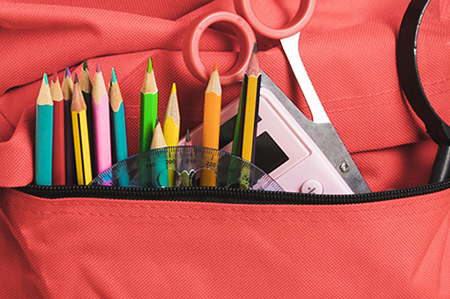Section 3: Strategies to support youth mental health
Section 3: Strategies to support youth mental health
Monday, 24 May 2021
This section of the toolkit will explore simple and practical strategies that young people can use to look after their mental health and wellbeing.
For some young people this change may bring with it more challenges than others. It can be useful for young people to identify who they can turn to in their existing support networks that they trust.
Learning intentions
- Consider strategies to support young people’s mental health and wellbeing
- Identify ways to cope with difficult feelings.
5-a-day
You may be familiar with the idea of the 5-a-day for our physical health. There is a similar concept adapted from a piece of research conducted in the UK called the Foresight report. It described five simple strategies that can be done every day to promote and support mental health and wellbeing. In Jigsaw, we call this the 5-a-day for mental health and wellbeing.
Dealing with change or uncertainty can sometimes be difficult, so it is important to encourage young people to do things to look after themselves. The following activities explore some of the strategies from the 5-a-day and how to incorporate them in their daily routines.
Young people will reflect on:
- 5 things they can do everyday to look after their mental health and wellbeing
- How they can incorporate these 5 things into their daily routine.
Watch this short animation with your class. The animation describes the 5-a-day for mental health.
-
Activity
In this activity, the class will explore each of the 5-a-day. You can divide the class into 5 groups and assign them one of the 5-a-day, which are:
1. Connect
2. Be active
3. Keep learning
4. Give
5. Take notice
You can ask the groups to list as many examples as possible. Document the results for each group in lists on a blackboard / whiteboard. Suggest to the group that they take note of some of the ones they might enjoy as this will be relevant for the next activity.
-
Resource
In this activity, young people will incorporate each of the 5-a-day into their daily routines.
You can ask students to recall some of the things that were listed in previous activity.
Using the 5-a-day weekly planner, ask them to write down how they might get their 5-a-day during the week
Identifying strengths
It is useful for young people to have an awareness of their own personal strengths during a time of change or uncertainty. This is known as adopting a strengths-based approach. Using this approach with young people means focusing on the positives of the young person’s circumstance. Helping young people to identify and reflect on their own personal strengths may increase their confidence when they navigate the challenges and changes that are associated with this transition from primary to post-primary.
Identifying strengths supports young people to identify their own personal strengths and qualities which they can reflect on and utilise when they meet challenges in life.
Young people will reflect on:
- Their own personal qualities and strengths that may be useful when navigating the change from primary to post-primary

-
Activity
It can be useful for young people to have an awareness of their strengths during a time of change. They might like to reflect back on their own personal strengths when they are facing challenges in life. Print and complete the following worksheet with your class. There is a list of adjectives, values, hobbies provided to help them out.
Coping with difficult feelings
Everyone will experience the change from primary to post-primary school differently. In Jigsaw, we know that everyone may experience difficult emotions at times in their lives. During this period of change some young people may experience challenges that can bring up difficult emotions for young people.
The following resource will help young people consider what coping strategies work for them when they experience difficult emotions. It may be useful to relate this back to the characters in the animation Eoin, Blessing and Jamie experienced when they went through this change. The resource below can serve as a quick reminder of their own personal coping strategies.

-
Resource
Print this rainy day PDF resource and ask your class to apply their own plan. Ask young people to reflect on their own personal strengths and coping strategies. Explain that there are things we can do and things we can tell ourselves that make use feel better when we are feeling down. These will look different for everyone.
Support documents
Move on to Section 4: Identifying and accessing support
In this section, we looked at different ways that young people can support their mental health and wellbeing during this period of change. However, some young people may need to access additional support during this time.
In the final section, section 4 we will explore some of the barriers young people may face when accessing supports and where they can turn to for support.







